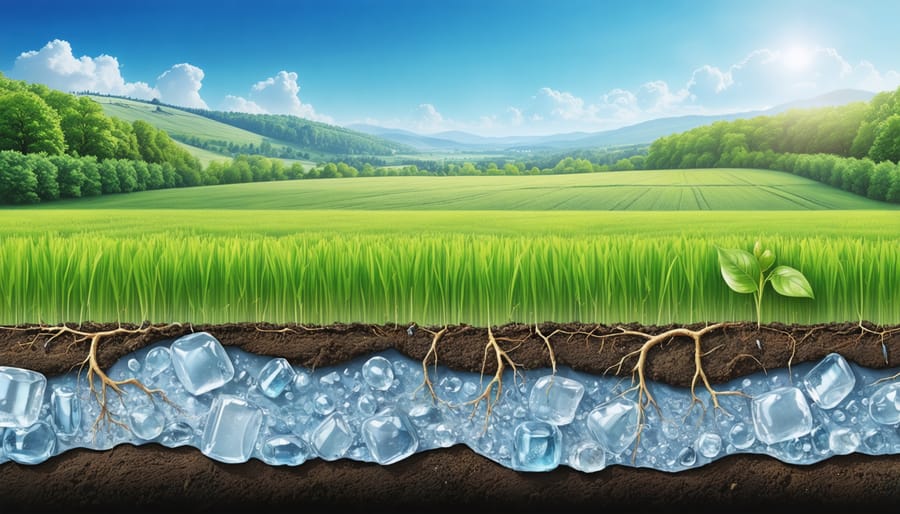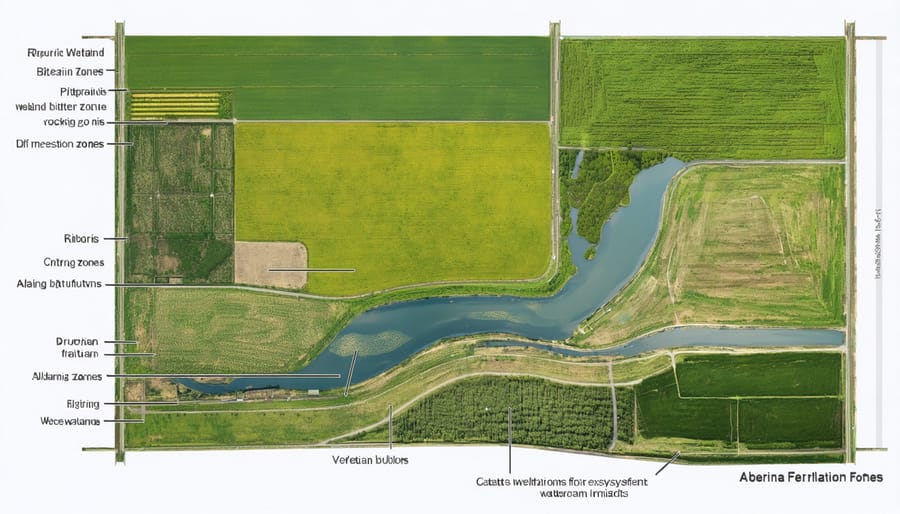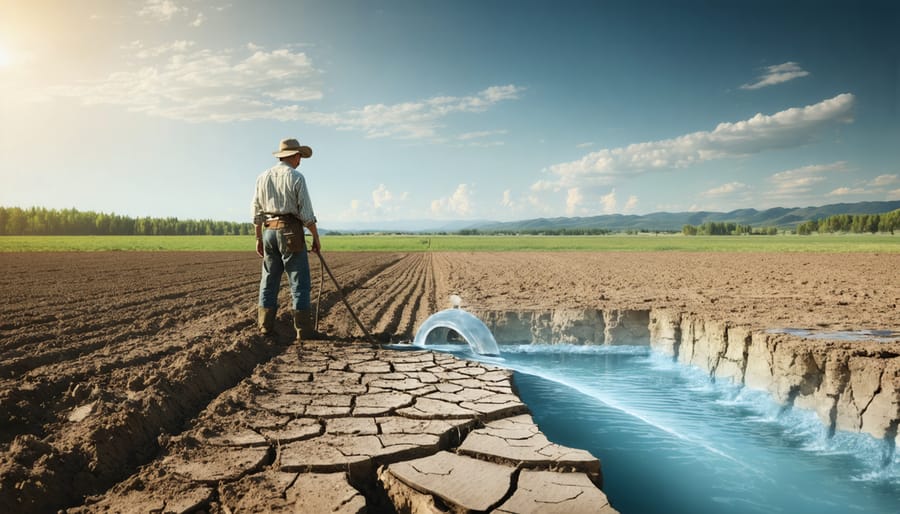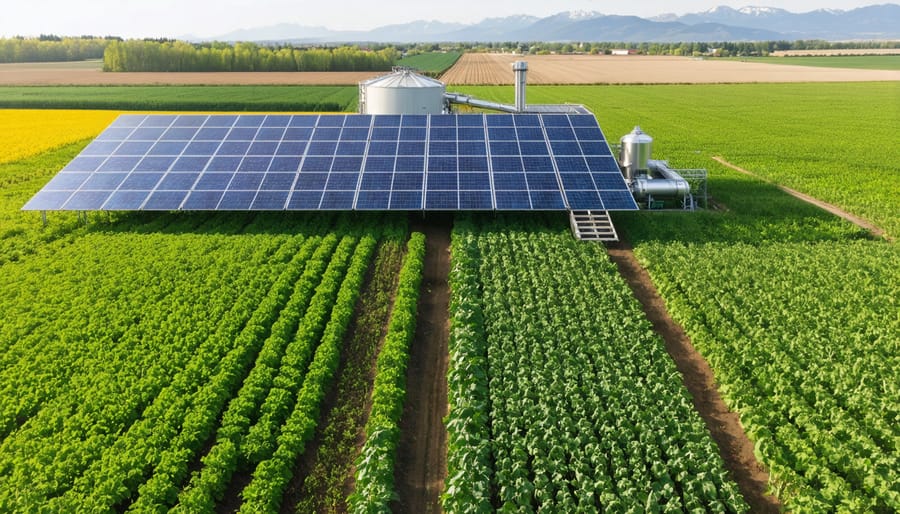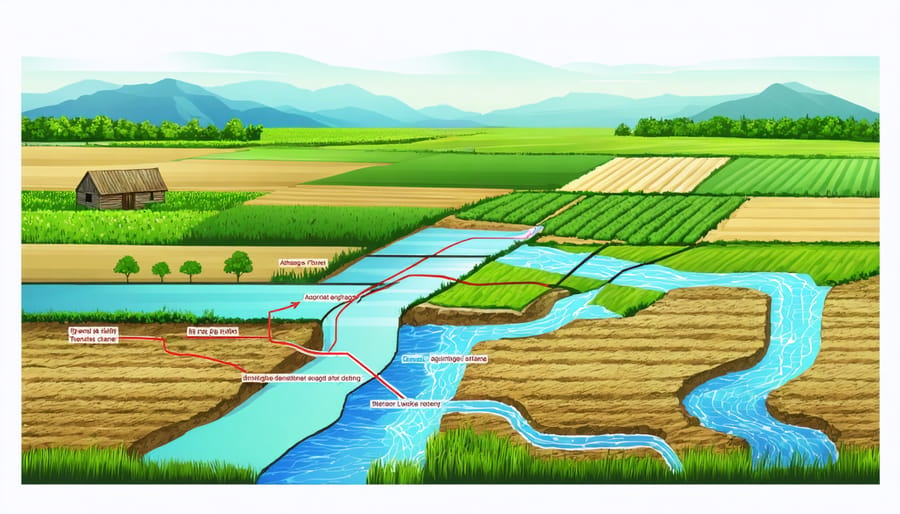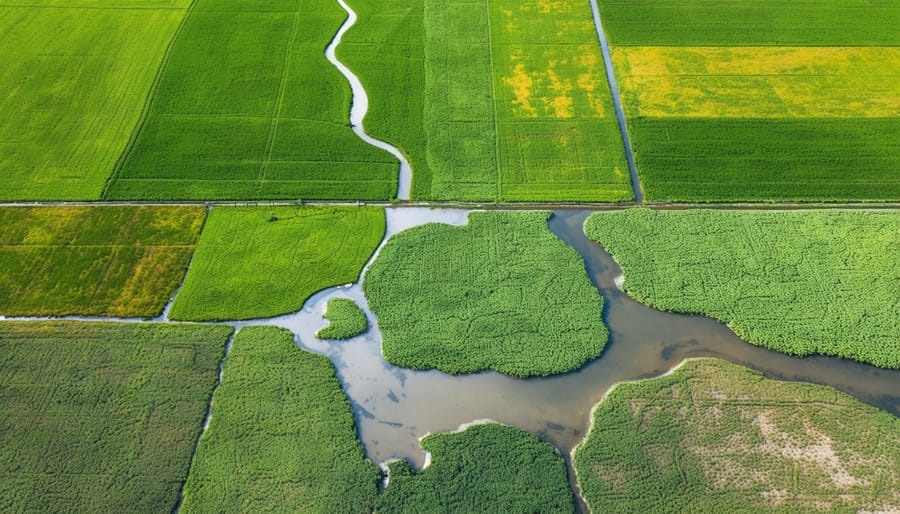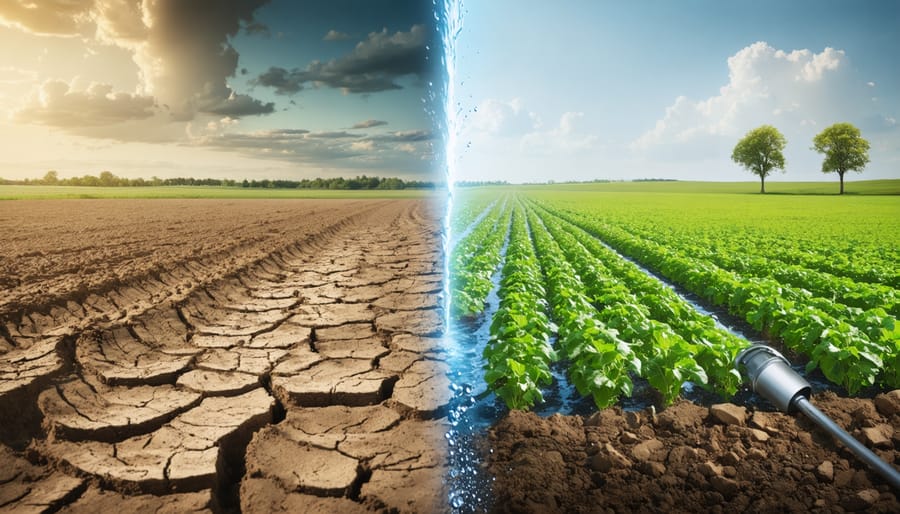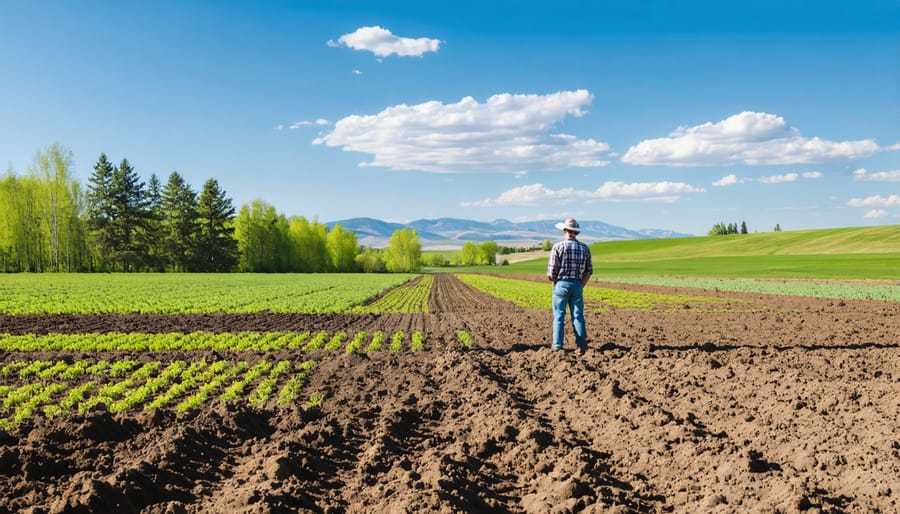Microplastic pollution has infiltrated every corner of our agricultural landscape, from the soil beneath our feet to the water we use for irrigation. As Canadian farmers witness firsthand the impacts of these tiny plastic particles – some smaller than a grain of wheat – on their land and water systems, the urgency for practical solutions in preventing water pollution has never been greater. Recent studies from Alberta’s irrigation districts reveal that agricultural runoff contains up to 60 microplastic particles per litre, threatening both crop quality and soil health. Yet this challenge presents an opportunity for our farming communities to lead the way in implementing innovative solutions. Through collaborative efforts between agricultural professionals and research institutions across the prairies, we’re discovering that traditional farming wisdom, combined with modern filtration techniques, offers promising pathways to protect our water resources. The solutions we develop today will safeguard not only our farms but also the future of sustainable agriculture across Canada.
The Hidden Impact of Microplastics on Agricultural Water
Common Sources in Agricultural Operations
In Alberta’s agricultural operations, several common materials and practices contribute to microplastic pollution. Plastic mulch films, widely used for weed control and moisture retention, can break down over time into smaller particles. Irrigation systems, particularly drip lines and temporary piping, may deteriorate and release microplastics into soil and water systems.
Feed bags, seed packaging, and agricultural containers are other significant sources. When not properly disposed of or exposed to weathering, these items can fragment into microscopic pieces. Bale wraps and silage covers, essential for livestock operations, can also shed plastic particles, especially when damaged by sun exposure or handling.
Many Alberta farmers have noticed plastic residue in their fields from degraded twine and netting used for hay bales. Even greenhouse operations contribute through the breakdown of poly-covering materials and growing containers. The challenge is particularly noticeable in areas with intense wind exposure, where plastic materials can break down more quickly and spread across larger areas.
Modern farming equipment, especially plastic components in machinery and tools, can also generate microplastic particles through normal wear and tear. Understanding these sources is the first step toward implementing effective reduction strategies.
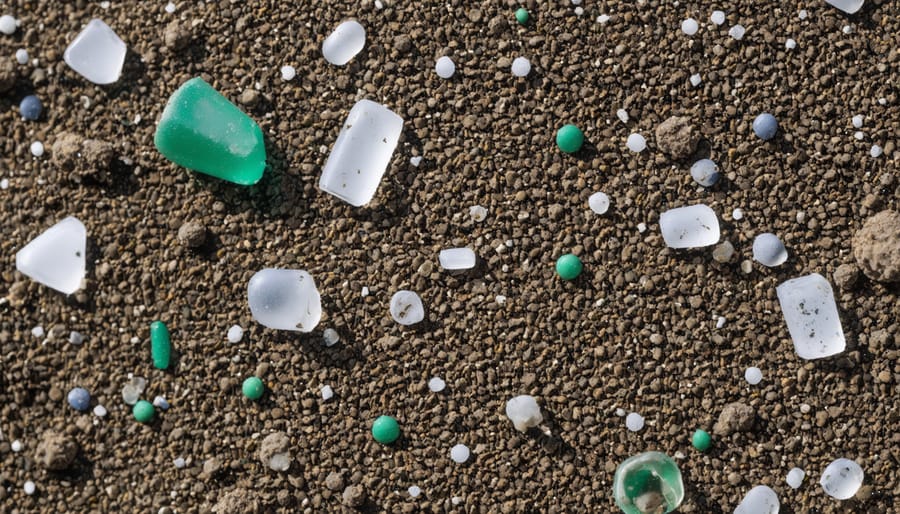
Effects on Soil and Crop Health
Recent studies conducted by Agriculture and Agri-Food Canada reveal concerning impacts of microplastics on our farmlands. These tiny particles, often smaller than 5mm, are significantly affecting soil health management and crop productivity across Alberta’s agricultural regions.
Research from the University of Alberta shows that microplastic contamination can reduce soil porosity by up to 15%, affecting water retention and root development. Crops grown in affected soils have shown decreased germination rates and stunted growth, with wheat yields dropping by 8-12% in heavily contaminated areas.
Moreover, microplastics act as carriers for harmful chemicals and can alter soil microbial communities essential for nutrient cycling. Prairie farmers have reported changes in soil structure and decreased earthworm populations in areas with high microplastic concentrations.
The good news is that implementing protective measures, such as using organic mulch and reducing plastic use in agricultural practices, can help maintain soil health. Many Alberta farmers are already adapting their practices, incorporating natural alternatives and working with soil conservation experts to protect their land’s productivity for future generations.
Alberta’s Innovative Solutions
Water Filtration Technologies
Alberta farmers are increasingly adopting innovative water filtration technologies to address microplastic contamination in their water systems. Many are implementing natural water filtration systems that combine traditional methods with modern technology.
Popular solutions include multi-stage filtration systems featuring activated carbon filters, which effectively trap microplastics as small as 5 micrometres. These systems are particularly effective when combined with reverse osmosis technology, which has shown promising results in removing up to 99% of microplastic particles from water sources.
Local success stories include the Morton Family Farm near Red Deer, which installed a comprehensive filtration system that processes 5,000 litres per hour. Their system incorporates sand filtration, activated carbon, and membrane technology, resulting in significantly cleaner irrigation water and improved crop yields.
Several agricultural cooperatives have formed buying groups to make these technologies more accessible. The Central Alberta Water Quality Initiative, for example, helps farmers access bulk pricing on filtration equipment and provides installation support. They’ve helped over 50 farms implement new filtration systems in the past two years.
Maintenance costs typically range from $2,000 to $5,000 annually, but many farmers report that the investment pays for itself through improved water quality and reduced equipment maintenance needs. Provincial grants are available through the Environmental Stewardship and Climate Change Program, covering up to 30% of installation costs.
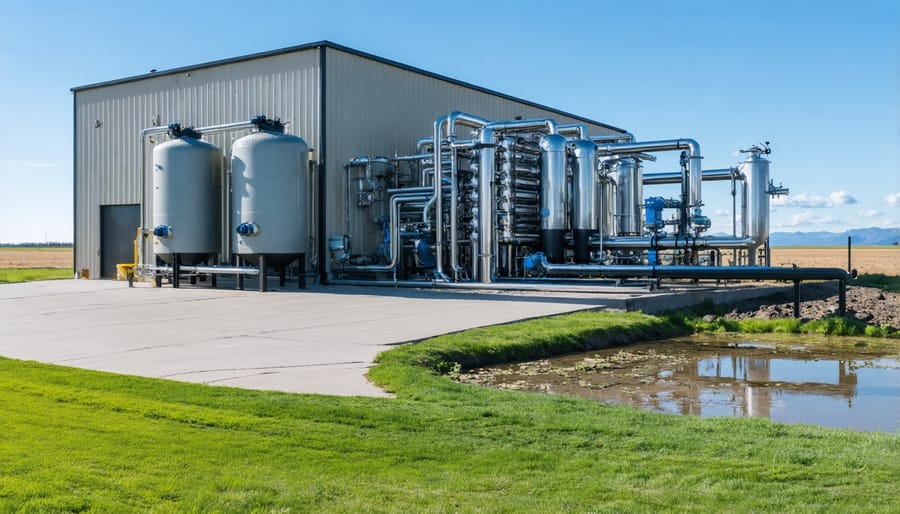
Alternative Materials and Methods
Canadian farmers are increasingly turning to sustainable alternatives that help reduce microplastic contamination in agricultural practices. Biodegradable mulch films made from corn starch and other plant-based materials offer excellent soil protection while naturally decomposing at the end of the growing season. These alternatives have shown promising results in field trials across Alberta, with farmers reporting comparable crop yields to traditional plastic mulch.
Natural fiber materials like jute, hemp, and flax – all of which can be grown locally in Canada – are proving effective for weed suppression and soil moisture retention. These materials break down into organic matter, enriching the soil rather than contaminating it. Local farmer Mike Thompson from Red Deer County shares, “Switching to hemp-based ground covers has improved our soil health significantly over the past three years.”
Innovative irrigation solutions include clay-based water retention systems and organic hydrogels that eliminate the need for plastic-based irrigation components. These alternatives not only prevent microplastic pollution but also improve water efficiency. Several Alberta-based agricultural cooperatives have successfully implemented water-smart systems using bamboo and recycled metal components.
For greenhouse operations, recyclable and compostable plant pots made from paper pulp, coconut coir, and compressed straw are gaining popularity. These alternatives typically last one growing season and can be directly planted into the ground or composted, eliminating plastic waste entirely.
Practical Steps for Your Farm
Assessment and Planning
To effectively tackle microplastic contamination on your farm, start by conducting a thorough assessment of potential sources. Walk your property with a notebook, identifying areas where plastic materials are commonly used, such as irrigation systems, greenhouse covers, and agricultural films. Document the condition of these materials and note any signs of degradation or breakdown.
Create a detailed inventory of plastic usage across your operations, including seasonal variations. This helps track consumption patterns and identifies opportunities for reduction. Many Alberta farmers have found success using digital tracking tools or simple spreadsheets to monitor plastic use throughout the year.
When developing your reduction plan, set realistic goals with measurable targets. For example, aim to reduce single-use plastics by 25% in the first year. Break down these goals into manageable quarterly objectives, focusing on one area of your operation at a time.
Consider forming a local farmer working group to share experiences and strategies. The collective knowledge of neighbouring farms can provide valuable insights and potential solutions you might not have considered. Several agricultural communities in central Alberta have successfully implemented shared recycling programs through such collaborations.
Remember to review and update your plan regularly, at least every six months. This allows you to track progress, adjust strategies based on what’s working, and incorporate new alternatives as they become available. Document successful changes and share these experiences with your local agricultural community to help build collective knowledge and momentum for change.
Implementation Strategies
Let’s tackle microplastic reduction with a straightforward, three-phase approach that’s proven effective across Alberta’s farming communities. Start by conducting a thorough assessment of your water systems, including irrigation lines and storage facilities. Document current plastic usage and identify potential contamination points – many successful farmers begin with their equipment maintenance areas and chemical storage facilities.
Next, implement filtration solutions at key points in your water system. Install mesh filters at water intake points and consider upgrading to advanced filtration systems that can capture particles as small as 5 micrometers. Several Alberta farmers have reported success using multi-stage filtration systems, particularly in areas with high plastic contamination risks.
Finally, establish preventive measures throughout your operation. Replace plastic-based materials with biodegradable alternatives where possible, properly dispose of agricultural plastics through local recycling programs, and maintain regular equipment checks to prevent plastic degradation. Consider joining community initiatives like the Agricultural Plastics Recycling Group, which has helped numerous farms reduce their plastic footprint.
Remember to monitor and adjust your strategy regularly. Keep detailed records of changes made and their effectiveness. Many successful implementations in our region started small and gradually expanded based on results and feasibility. Working with neighboring farms can also help create more effective, community-wide solutions to microplastic pollution.
Community-Based Solutions

Local Success Stories
The Sundre River Valley Farm, led by Sarah Thompson, demonstrates how community watershed management can make a real difference. By implementing innovative filtration systems and reducing plastic mulch usage, Thompson reduced microplastic runoff by 85% over three years. Her success has inspired neighboring farms to adopt similar practices.
In Lethbridge County, the Martinez family farm partnered with local researchers to test biodegradable alternatives to traditional plastic materials. Their transition to corn-based seedling trays and natural fiber twine eliminated approximately 200 kg of plastic waste annually. The farm’s soil health has improved significantly, and they’ve documented a 30% reduction in water contamination levels.
The Red Deer Agricultural Cooperative, representing 15 local farms, collaborated on a groundbreaking irrigation system that filters out microplastics before they enter waterways. This community-driven initiative has become a model for other farming regions, demonstrating how collective action can lead to meaningful environmental improvements while maintaining productive agricultural operations.
Available Resources and Support
Several provincial and federal programs are available to help Alberta farmers address microplastic concerns in their operations. The Environmental Farm Plan (EFP) offers free consultations and assessments to identify potential microplastic sources and develop mitigation strategies. Through the Canadian Agricultural Partnership (CAP), farmers can access funding for implementing water filtration systems and upgrading irrigation infrastructure to reduce plastic contamination.
The Alberta Watershed Enhancement Program provides grants of up to $10,000 for projects aimed at protecting water quality, including initiatives to reduce microplastic pollution. Local agricultural extension offices offer workshops and educational resources, connecting farmers with experts who can provide guidance on sustainable practices.
Many regional conservation authorities have established mentorship programs, pairing experienced farmers who have successfully implemented microplastic reduction strategies with those looking to make similar changes. The Agricultural Research and Extension Council of Alberta (ARECA) maintains a database of best practices and case studies specific to our region’s conditions.
For immediate assistance, farmers can contact their local agricultural fieldman or visit their nearest Agriculture Service Board office, where staff are trained to provide practical solutions for microplastic management.
As we’ve explored throughout this article, the challenge of microplastics in our agricultural systems requires a collective response from our farming community. The solutions we’ve discussed – from implementing filter systems to adopting biodegradable alternatives – are most effective when we work together to put them into practice.
Here in Alberta, we’re already seeing promising results from farmers who have taken the initiative to address microplastic pollution. Many have successfully integrated natural filtration systems into their irrigation networks, while others have pioneered the use of biodegradable materials in their operations. These early adopters are showing us that change is not only possible but profitable.
The path forward is clear: we need to continue building on these successes through education, collaboration, and community action. Consider joining local agricultural associations or participating in watershed protection programs. Share your experiences and learn from fellow farmers who are tackling similar challenges. Remember, every step we take to reduce microplastic pollution, no matter how small, contributes to the health of our soil, water, and future generations.
Let’s make Alberta a leader in sustainable agricultural practices. Together, we can protect our precious water resources while maintaining productive and profitable farms. The time to act is now – your participation makes a difference in creating a cleaner, more sustainable future for Canadian agriculture.

